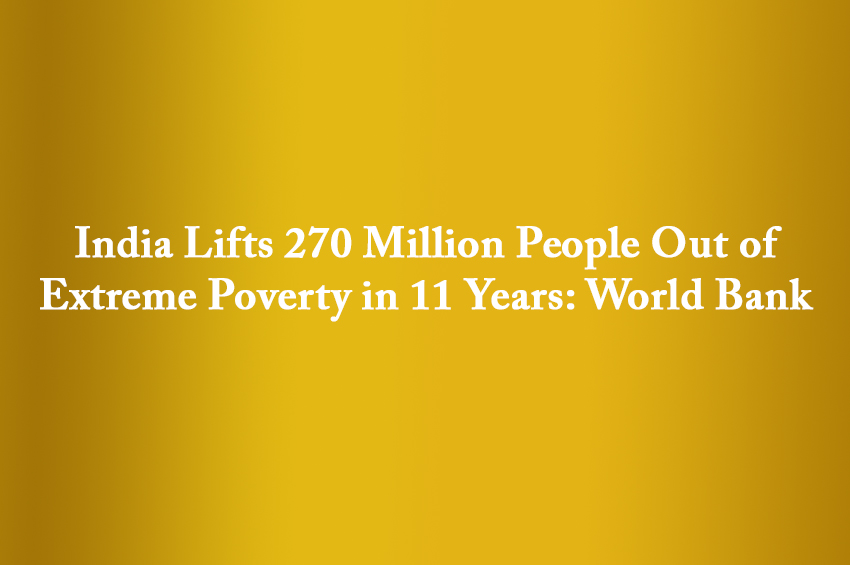Winning Bizness Desk
Mumbai India has made significant progress in reducing extreme poverty over the past decade, with nearly 270 million people rising above the poverty line between 2011-12 and 2022-23. According to a recent World Bank report, extreme poverty in India declined from 27.1% to just 5.3% during this period. The number of people living in extreme poverty dropped from 344.47 million (34.44 crore) in 2011-12 to 75.24 million (7.52 crore) in 2022-23.
Five states lead two-thirds of poverty reduction
The World Bank attributed the sharp fall in poverty to a combination of policy initiatives and economic reforms under the leadership of Prime Minister Narendra Modi. Notably, five major states — Uttar Pradesh, Maharashtra, Bihar, West Bengal, and Madhya Pradesh — played a dominant role in this change. These five states accounted for nearly 65% of India’s extremely poor population in 2011-12, but by 2022-23, they were responsible for two-thirds of the overall poverty reduction nationwide.
Urban poverty reduced drastically from 10.7% to 1.1%
The World Bank measured poverty using the international poverty line of $3.00 per day (at 2021 prices). Both urban and rural areas saw substantial improvements. In rural India, the poverty rate fell from 18.4% to 2.8%, while urban poverty plummeted from 10.7% to 1.1% over the same 11-year span. This indicates a strong and balanced poverty alleviation trend across the country.
Poverty under old benchmark falls from 16.2% to 2.3%
When viewed through the earlier poverty benchmark of $2.15 per day (at 2017 prices), the decline in poverty appears equally impressive. Under this yardstick, India’s poverty rate reduced from 16.2% in 2011-12 to 2.3% in 2022. In terms of absolute numbers, 205.93 million people (20.59 crore) were living below the $2.15 line in 2011, but this dropped to 33.66 million (3.36 crore) by 2022.
Multidimensional poverty also falls from 53.8% to 15.5%
Apart from income-based metrics, India has also achieved remarkable success in reducing multidimensional poverty, which includes deficiencies in health, education, and living standards. As per the Multidimensional Poverty Index (MPI), the rate dropped from 53.8% in 2005-06 to 16.4% in 2019-21 and further to 15.5% by 2022-23. This reflects holistic improvements in overall human development indicators.
PM credits government schemes for poverty reduction
Reacting to the report, Prime Minister Narendra Modi called the achievement a significant milestone towards building a poverty-free nation. He attributed the success to targeted schemes like Pradhan Mantri Awas Yojana (housing), Ujjwala Yojana (clean cooking gas), Jan Dhan Yojana (banking access), and Ayushman Bharat (healthcare coverage). The PM further emphasized the role of digital inclusion, infrastructure, and transparency reforms. According to Modi, over 25 crore people benefited directly from these government initiatives, enabling them to move out of poverty.
7 Summary Pointers:
- World Bank reports 270 million Indians moved out of extreme poverty from 2011-12 to 2022-23.
- Extreme poverty rate declined from 27.1% to 5.3% in this period.
- Five states — UP, Maharashtra, Bihar, West Bengal, MP — drove two-thirds of poverty reduction.
- Urban poverty dropped from 10.7% to 1.1%; rural poverty fell from 18.4% to 2.8%.
- Poverty under $2.15/day benchmark fell from 16.2% to 2.3%.
- Multidimensional poverty dropped from 53.8% (2005) to 15.5% (2022).
- PM credits housing, health, banking and cooking gas schemes for lifting over 25 crore out of poverty.


